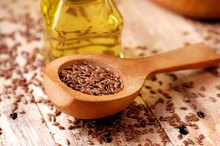Exercise & Histamines
Perhaps you've been running but had to stop because your legs were itching uncontrollably. Or maybe you were lifting weights when you noticed that your nose started to run and your skin was developing red blotches. You may be experiencing an allergic reaction brought on by exercise-induced histamine production, an issue that has been documented since the 1970s and can range from mildly uncomfortable to life-threatening.
What are Histamines?
Histamine production is the first step in an allergic reaction: Your body produces histamines, a type of neurotransmitter, in response to allergens in the environment such as mold and dust mites. Histamines cause your body to begin an inflammatory response to the allergen. Blood vessels grow, causing the redness that accompanies an allergic reaction. The histamines trigger various receptors, causing them to engage and attempt to eliminate the allergens.
Histamine Production During Exercise
Exercise & Histamines
Learn More
Exercise causes mast cells -- cells containing large amounts of histamines -- to degranulate, or release granules. Once the histamines are released, you will experience an allergic reaction. Ingesting foods or medications to which you are allergic before exercising can help trigger the production of histamines, according to a 2008 study published in the "Journal of Investigational Allergology and Clinical Immunology."
Types of Reactions
Exercise-induced histamine production may result in urticaria, angioedema or anaphylaxis, which can appear either alone or in combination. Urticaria produces red, itchy hives that will generally go away several hours after you have stopped exercising. Angioedema is a more severe type of swelling: Although it may manifest in a similar way to urticaria, it involves deeper layers of the skin and ranges from small patches of hives to extreme swelling and constriction of the airways. Anaphylaxis is the most severe of the three, causing lowering of blood pressure and swelling of the throat that can be life-threatening.
Prevention
Swollen Throat Allergy
Learn More
Waiting four to six hours after eating, avoiding aspirin, and not exercising during menstruation can help you avoid exercise-induced histamine production, according to a 2001 "American Academy of Family Physicians" article. Taking an antihistamine before exercising has been shown to reduce histamine production. Take fexofenadine (Allegra) to block receptor H1, reducing symptoms of sneezing, itchy eyes and runny nose. Ranitidine (Zantac) can be used to block receptor H2, reducing stomach acid buildup and preventing symptoms such as acid reflux. If you have been diagnosed with severe allergies by a doctor, he may be able to prescribe a specific medication for your symptoms.
Treatment
If you notice yourself experiencing a minor but uncomfortable allergic reaction, stop exercising; the feeling should go away after a short time. If you are undergoing a severe allergic reaction such as constriction of your airway, self-administer epinephrine (EpiPen) if you have it and immediately seek medical assistance.
Related Articles
References
- American Academy of Family Physicians: Exercise-Induced Anaphylaxis and Urticaria
- Biological and Pharmaceutical Bulletin: Roles of Histamine in Exercise-Induced Fatigue: Favoring Endurance and Protecting Against Exhaustion
- EurekAlert! : Histamine Tied to Changes in Blood Pressure During Exercise-Recovery Period
- HealthGuidance: What is a Histamine Reaction?
- Journal of Investigational Allergology and Clinical Immunology: Food-Dependent Exercise-Induced Anaphylaxis: Possible Impact of Increased Basophil Histamine Releasability in Hyperosmolar Conditions
Writer Bio
This article was written by the CareerTrend team, copy edited and fact checked through a multi-point auditing system, in efforts to ensure our readers only receive the best information. To submit your questions or ideas, or to simply learn more about CareerTrend, contact us [here](http://careertrend.com/about-us).








